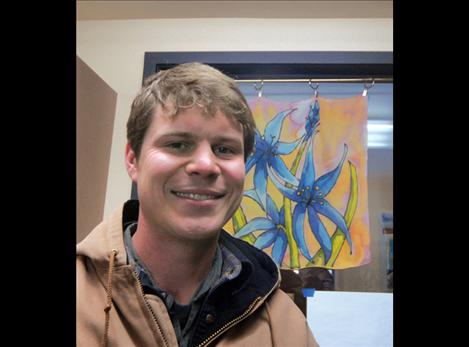Kenning named EPA’s 2015 Tribal ecoambassador
Hey savvy news reader! Thanks for choosing local.
You are now reading
1 of 3 free articles.
PABLO — The camas plant and Salish Kootenai College forestry professor Robert Kenning’s work with camas restoration on the Flathead Reservation garnered Kenning an award. He was named one of four U.S. Environmental Protection Agency’s 2015 Tribal ecoambassadors.
The ecoambassadors are tribal college and university professors who work in partnership with EPA scientists to improve environmental conditions and public health in tribal communities, according to the EPA’s press release.
Kenning, 34, is in his eighth year at SKC, moving here from Maine.
Along with the ecoambassador recognition comes grant funding that “allows us to fund student interns,” Kenning said.
“Camas is a traditional food plant (of the Salish, Kootenai and Pend O’Reille people) and used to be more widespread,” Kenning said, adding that the plant is a member of the lily family and the bulbs of the plant are eaten.
Historically camas was the most frequently traded item after salmon, and camas habitat goes all the way to the west coast, he said.
Many tribes at that time used prescribed burning to increase camas production.
Kenning checks in with the Salish and Kootenai Culture Committees to make sure they approve the projects.
“Elders are just a great resource,” Kenning said. “They know a whole lot about camas and where it is.”
Kenning and his interns work with the Confederated Salish and Kootenai Tribes Natural Resource Department and the SKC Natural Resources Department.
“It’s great to partner with the tribes, and it’s great for students to work with tribal biologists,” Kenning said, adding that the SKC forestry department wants to maintain the connection.
Kenning’s goal is to enhance and preserve the camas, since it is a culturally significant plant and part of the ecosystem. Much of his work takes place on land the CSKT manage.
CSKT wildlife biologist, Whisper Camel-Means, said the tribes already had the staff and were interested in camas restoration, so Kenning’s projects were right on the mark.
Camel-Means also said many of the properties the tribes are managing were ditched so they are restoring hydrology for lands that were dewatered. That’s important for camas, since it needs sites with good moisture and soil.
Kenning and his interns also look at the plant communities to see what’s thriving and whether there are invasive species. Kenning’s fieldwork includes setting up plots on camas sites to determine what species are there and what dominates or is invasive. Much fieldwork takes place in the spring because that’s when camas comes up, but this fall they are burying gypsum blocks near camas roots to record moisture levels.
“Something we are very proud about is more research capacity at SKC,” Kenning said. “It’s important to make sure we’re doing projects that are locally relevant.”
















